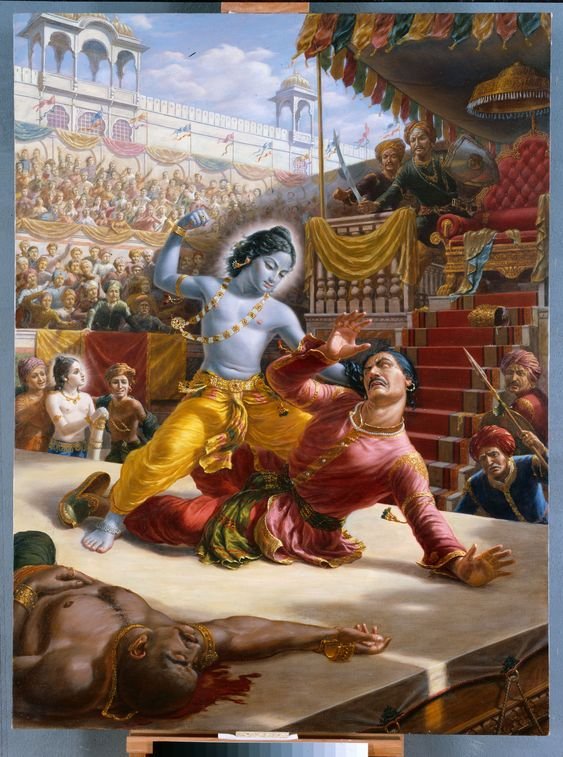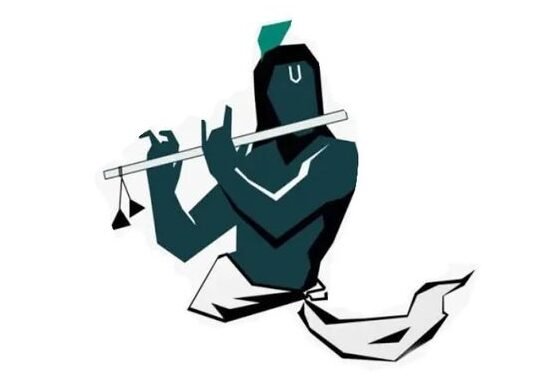In the rich tapestry of Hindu mythology, few figures stand as high as Lord Krishna, revered for his divine wisdom and cosmic influence. Still, the question remains in the hearts of many people: Who can defeat Lord Krishna? Immersed in the sacred Sanskrit texts of the Bhagavad Gita, the Mahabharata and the Puranas, we embark on a journey to explore the invincibility of Lord Krishna and the profound symbolism woven into these ancient tales.
Lord Krishna, often regarded as the eighth avatar of Lord Vishnu, embodies the supreme divine essence in Hinduism. His life, as chronicled in the Mahabharata, particularly the Bhagavad Gita, showcases his divine wisdom and cosmic prowess. In the epic, Krishna serves as the charioteer and guide to Arjuna, imparting profound spiritual teachings that continue to inspire millions.
The Bhagavad Gita, serves as a beacon of divine revelation. In Chapter 4, Verses 7-8, Krishna declares, “Whenever there is a decline of Dharma and an increase of Adharma, at that time I myself appear on the earth” (Bhagavad Gita 4.7-8). These verses reveal Krishna’s cosmic purpose, suggesting that his manifestation is not simply a response to the events of the Mahabharata, but a cosmic intervention during moral crises.

The 11th chapter of the Bhagavad Gita, a climactic revelation, reveals to Arjuna the Vishvarupa of Krishna, a cosmic form of peerless grandeur. This cosmic display strengthens the belief in Krishna’s invincibility, as his divine form encompasses the entire universe. It is a scene beyond mortal comprehension, confirming Krishna’s role as a cosmic power that transcends the limits of human understanding (Bhagavad Gita 11).
Journeying through the Puranas, the Bhagavat Purana and the Vishnu Purana provide a rich depiction of the supremacy of Krishna. The stories of Krishna subduing demons like Kansa, Aghasura and Bakasura show his invincibility. In the Bhagavat Purana, the iconic story of Krishna lifting Mount Govardhan to save the villagers from the wrath of Indra emphasizes not only physical strength but divine power.

The descriptions of Krishna’s childhood exploits, makhan chori (butter thief) and raas lila with the gopis, while seemingly playful, hold deep spiritual symbolism. It shows the omnipresence of Krishna and his ability to captivate the hearts of devotees.
In the Vishnu Purana, Krishna’s role in the Mahabharata is detailed, emphasizing his strategic skills and leadership, which contribute to the victory of the Pandavas.
While the scriptures primarily emphasize Krishna’s invincibility, some stories introduce elements of challenge. In the Mahabharata, the hunter Jara accidentally shoots an arrow at Krishna, resulting in his departure from the mortal world. However, this event is interpreted as a part of the divine plan, emphasizing the mortality of the physical form.
Similarly, the story of Banasura’s defiance and subsequent surrender highlights a clear challenge to Krishna’s power. However, due to Krishna’s skillful diplomacy and divine power, Banasura eventually had to accept Krishna’s supremacy.
So, who can stand against Lord Krishna’s might? The answer, etched in the verses of the Bhagavad Gita and woven into the fabric of ancient tales, resounds boldly: NONE. The invincibility of Krishna isn’t a debate; it’s a cosmic truth, a narrative where righteousness stands undefeated. In the grand script of existence, Krishna isn’t a contender—he’s the triumphant force, the indomitable spirit of divine righteousness. The question, “Who can defeat Lord Krishna?” finds its answer not in challengers but in the resounding echo of an eternal truth. HARE KRISHNA!

